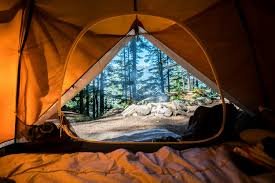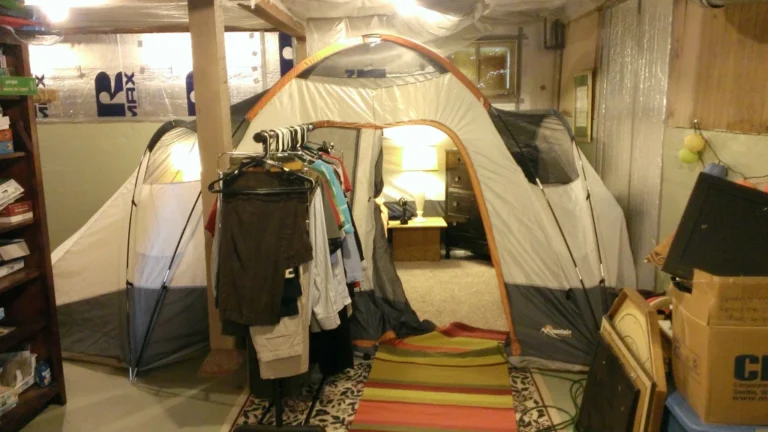Camouflage Tarpaulins (Tarnplanen) – The Ultimate Guide for Outdoor, Hunting & Everyday Use
A camouflage tarpaulin (Tarnplanen) is much more than just a sheet of coated fabric with eyelets. It offers reliable protection against rain, wind, and sun, while also helping to conceal equipment or people. Whether in the garden, while camping, on a hunt, or for military purposes – camo tarps are versatile tools that come in different materials, sizes, and camouflage patterns. West Pike Inn and Campgrounds
Materials & Properties
| Material | Properties | Advantages | Disadvantages |
|---|---|---|---|
| Polyester (PU-coated) | lightweight, water-repellent, tear-resistant | compact size, easy to carry, ideal for trekking | less durable under permanent stress |
| Polyethylene (PE) | woven fabric, waterproof, very robust | affordable, frost-resistant, durable | bulkier, less flexible |
| PVC (Frontlit, Mesh) | extremely strong, printable, weather-resistant | professional use, long-lasting, mesh variants are wind-permeable | heavier, more expensive |
👉 Tip: Polyester is best for hiking and camping, PE works well as a cover tarp for garden or construction, while PVC is perfect for professional or event use.
Sizes & Shapes
-
Standard sizes: 2×3 m, 3×3 m, 3×4 m
-
Large sizes: up to 5×6 m or more
-
Custom-made options: available for exact fit
-
Shapes:
-
rectangular (common for covering objects)
-
square (popular for tarp shelters and camping setups)
-
Camouflage Patterns & Colors
-
Flecktarn: classic German military pattern, great for European forests
-
Woodland: well-known US pattern, brown-green mix, versatile
-
Olive green: simple, universal, blends into many environments
-
Winter camo: white-gray for snowy landscapes
-
Phantomleaf / Digital camo: modern high-tech designs for advanced concealment
Choosing the Right Pattern
| Environment | Recommended Pattern |
|---|---|
| Central European forest | Flecktarn |
| North American woodland | Woodland |
| Garden / Everyday | Olive green |
| Winter terrain | Winter camo |
| Professional / Special forces | Phantomleaf, Digital camo |
Functional Features
-
Waterproof rating: measured in water column (e.g., 1,500 mm = waterproof for most outdoor use)
-
Eyelets: usually spaced 50–100 cm apart, often reinforced with metal rings
-
Tear resistance: reinforced edges and double-stitched seams improve durability
-
UV resistance: prevents fading and damage during long-term outdoor exposure
-
Weight:
-
lightweight tarps: under 1 kg
-
heavy-duty tarps: 2–3 kg or more
-
Common Uses
Outdoor & Camping
-
emergency shelter or tent substitute
-
sunshade or rain cover
-
groundsheet for backpacks or sleeping bags
Hunting & Fishing
-
camouflage for blinds or hides
-
cover for equipment and game
-
protection against rain during long waits
Military & Survival
-
bivouac shelter or weather cover
-
visual camouflage
-
improvised stretcher or gear cover
Household & Garden
-
cover for firewood, furniture, or vehicles
-
protection for construction materials
-
privacy screen along fences or balconies
Events & Construction
-
weather protection for booths or stages
-
printable tarps for advertising
-
partitions or backdrops
Tips for Choosing the Right Camouflage Tarp
-
Select the right material: Polyester for hiking, PE for garden and covering, PVC for professional use.
-
Check waterproof rating: look for water column values – higher numbers mean better water resistance.
-
Compare eyelet spacing: more eyelets = more flexible setup.
-
Balance weight and durability: light tarps for mobile use, heavy ones for permanent cover.
-
Choose a suitable camouflage pattern: match the environment for effective concealment.
Care & Longevity
-
Cleaning: rinse with water; avoid harsh detergents
-
Drying: always dry completely before storing to prevent mold
-
Storage: keep in a cool, dry place away from direct sunlight
-
Repair: small rips can be fixed with repair kits or heavy-duty tape
-
Extend lifespan: avoid leaving the tarp in constant direct sunlight or extreme stress
Safety & Handling
-
Stable setup: use ropes, pegs, or bungees for secure fastening
-
Wind resistance: don’t overstretch – leave flexibility to reduce stress on eyelets
-
Fire safety: keep away from open flames or hot surfaces (most tarps are not heat-resistant)
-
Trip hazard prevention: mark or make visible any guy lines to avoid accidents
Conclusion
A camouflage tarp is an indispensable companion for outdoor adventures, hunting trips, military use, or even everyday household tasks. Thanks to a wide choice of materials, sizes, and patterns, there’s a suitable model for every purpose.
By paying attention to material quality, waterproof rating, number of eyelets, and the right camouflage pattern, you’ll ensure your tarp is not only functional but also long-lasting. With proper care, a good-quality tarp can serve reliably for many years.


